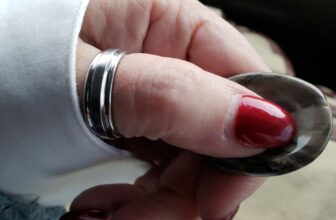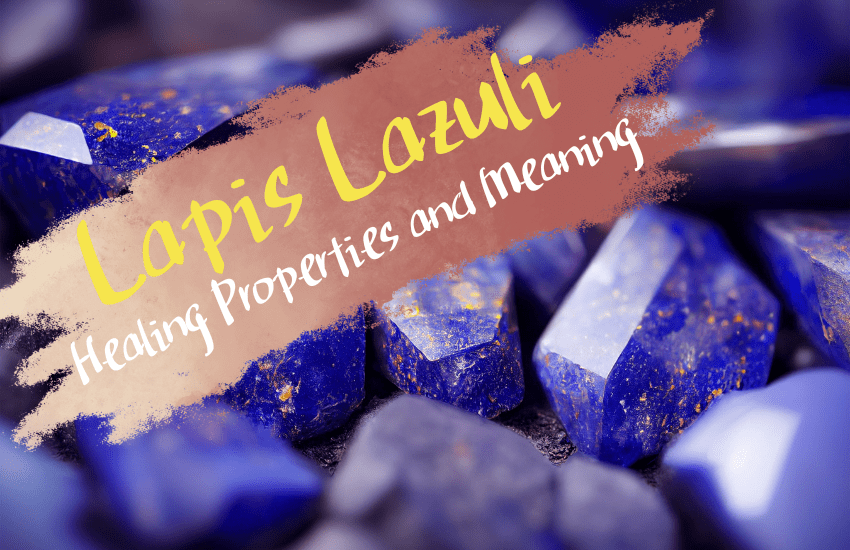
Table of Contents
Lapis lazuli is a beautiful, dark blue stone that has a history as old as time itself. This cerulean gemstone has been famous since the time of the ancient Babylonians and Sumerians to the Greeks, Romans, and Egyptians up to modern times. What makes it so special is the twinkle from metallic minerals, giving it the appearance of stars in the night sky.
A unique and stunning crystal for the jewelry of all kinds, lapis lazuli catches the eye, brings peace, solidifies relationships, and is even believed to impart wisdom. In this article, we’ll take a look at everything you need to know about lapis lazuli, including its meaning and symbolism.
What Is Lapis Lazuli?
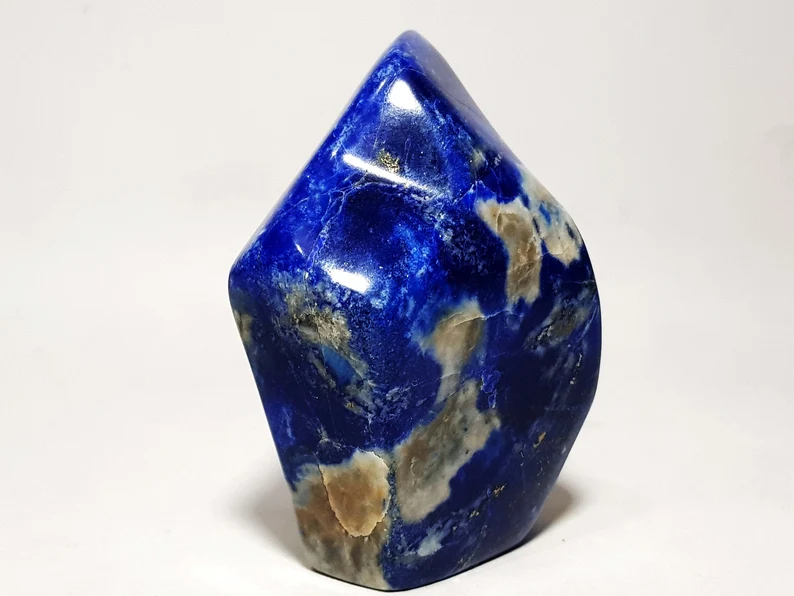
Lapis lazuli is a semi-precious stone that has been prized for its intense blue color for thousands of years. The stone is made up of a number of different minerals, including lazurite, calcite, and pyrite, which give it its unique appearance. It’s a sulfur-based sodium aluminum silicate that sits between 5 and 6 on the Mohs hardness scale. It has a specific gravity of 2.4 to 2.9 as well as a refractive index rating of around 1.50. However, individual mineral components may alter these details.
Lapis lazuli is often used in jewelry and is also a popular choice for decorative objects and sculptures. In ancient times, the stone was used to make pigment for painting, and it was also believed to have medicinal and spiritual properties.
This blue gemstone is found in a number of different places around the world, but the most famous deposits are in Afghanistan. It has been mined in Afghanistan for thousands of years, and the country is still one of the largest producers of the stone today. Other major sources of lapis lazuli include Chile, Russia, and the United States.
In general, lapis lazuli is found in regions where there are mountains with rocky, mineral-rich soils. It is often found in association with other minerals, such as quartz and pyrite.
History and Lore of Lapis Lazuli
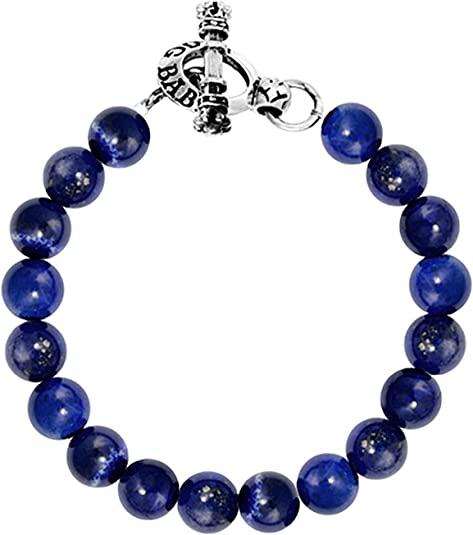
Lapis lazuli has a long and fascinating history. The stone has been highly valued for its intense blue color for thousands of years and has been used in various ways throughout history. In fact, it’s one of the oldest gemstones, its use dating back more than 6,500 years.
The ancient Minoans, Egyptians, Chinese, Babylonians, Sumerians, Greeks, and Romans used this deep blue gemstone in the finest art.
In ancient times, lapis lazuli was used to make pigment for painting and was also believed to have medicinal and spiritual properties. The ancient Egyptians used it to make jewelry and decorative objects, and the stone was also highly prized by the ancient Mesopotamians and Persians.
Part of what makes lapis lazuli stand out among other gemstones is the fact that its two-part name comes from two disparate cultures. “Lapis” is a Latin word meaning “stone” and “lazuli” stems from a Persian word, “lazhuward” which translates to “blue.” Therefore, it could literally read as “stone blue.”
The use of lapis lazuli as a jewelry stone dates back to indigenous Afghanistan. From there, its popularity traveled to Asia and it became an important stone for royalty and nobility in China, Korea, and Japan.
Lapis Lazuli in Ancient Egypt
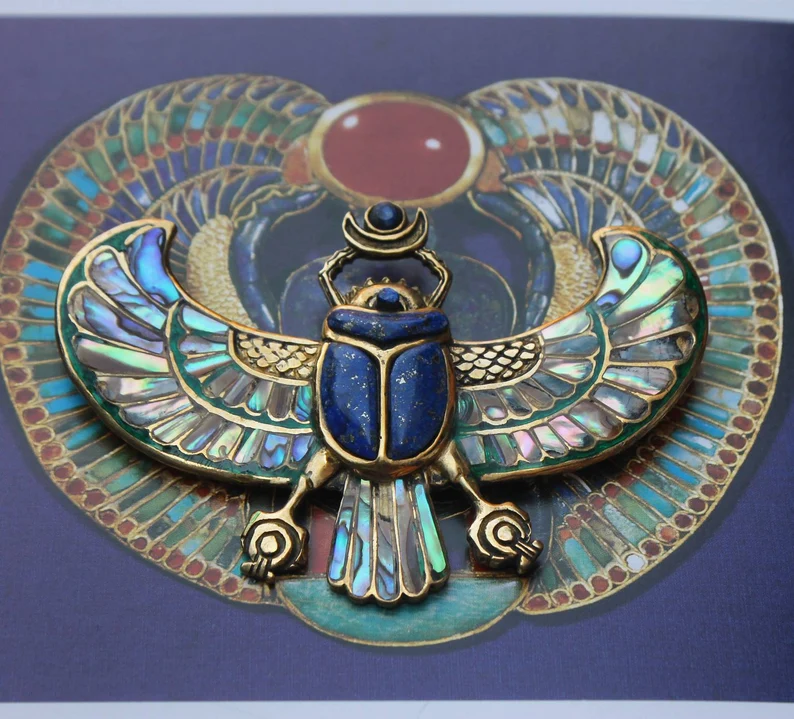
Lapis lazuli was used in ancient Egypt in jewelry and decorative motifs. One of the more notorious examples is how it inlays the death mask of King Tutankhamen along with carnelian and turquoise. According to various sources, Queen Cleopatra used ground lapis lazuli as an eye shadow. She did this in accordance with the ancient Egyptian belief that it was a symbol of the night sky and promoted clarity of vision.
Judeo-Christian Uses of Lapis Lazuli
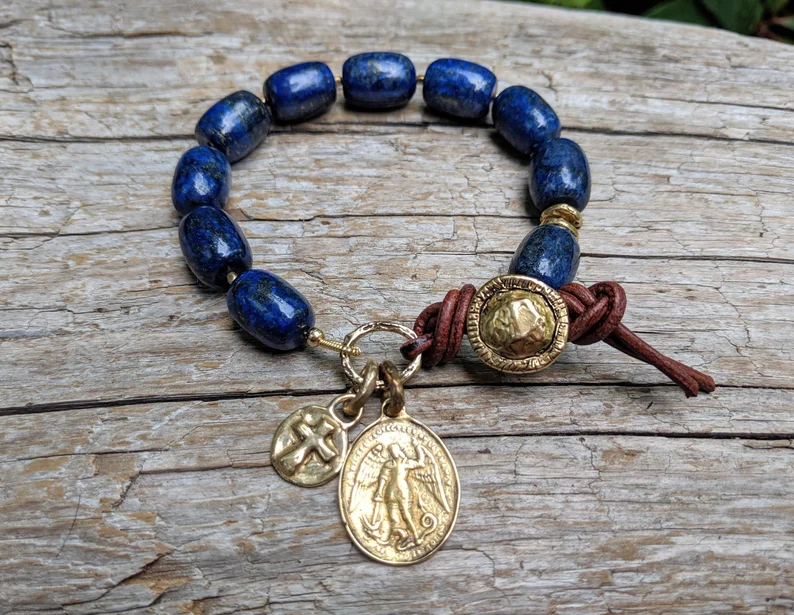
The Hebrews also had use for this mineral as an adornment for royal robes. According to scholars, King Solomon wore a piece of lapis lazuli in a ring that was given to him by an archangel to subdue and enslave demons.
Additionally, biblical scholars speculate that references to “sapphire” in the Old Testament are actually lapis lazuli. This is because real sapphires weren’t popular in the Middle East prior to the influence of the Roman Empire.
Lapis Lazuli in the Middle Ages
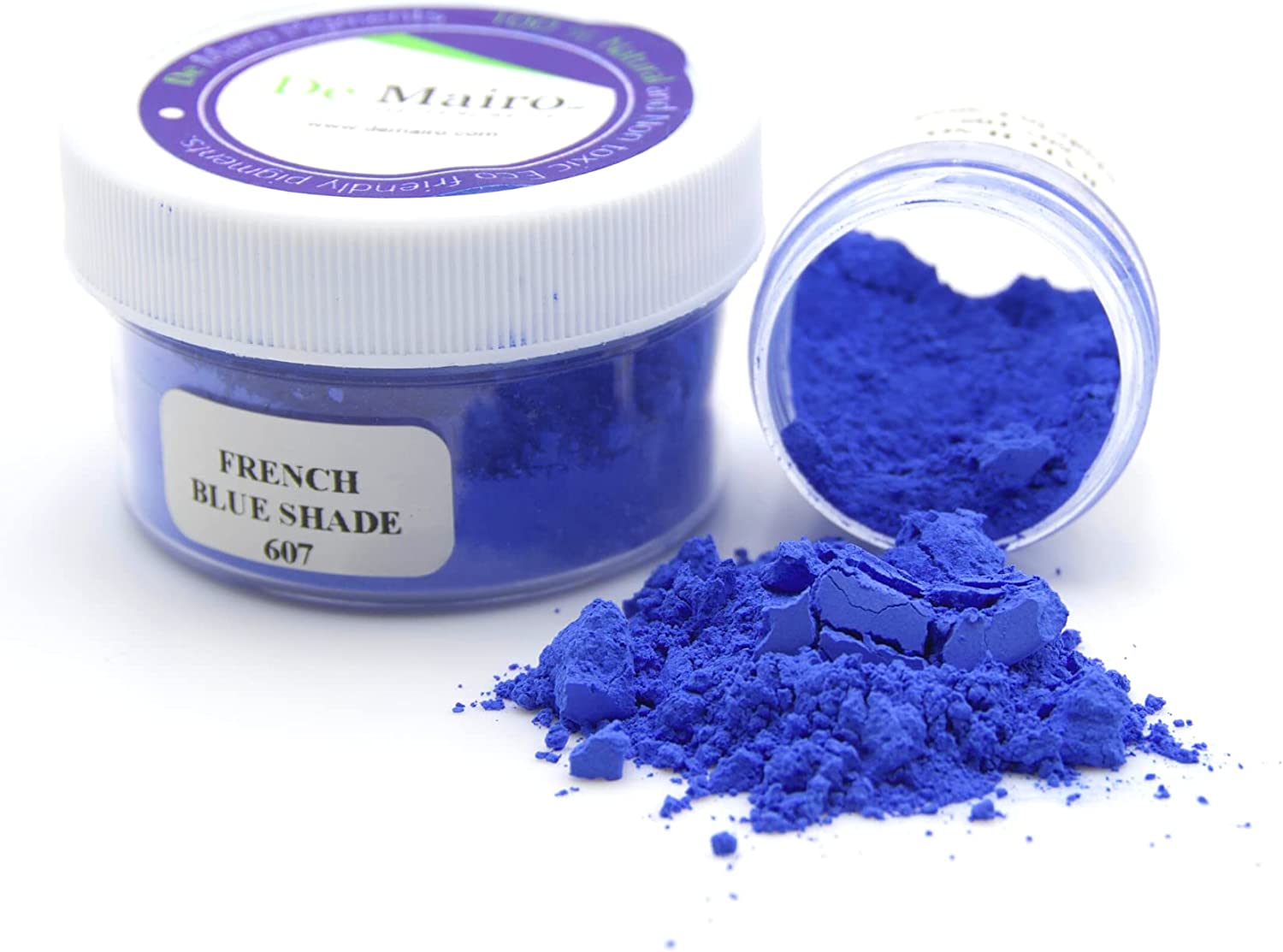
In the Middle Ages, lapis lazuli was used to make the pigment ultramarine, which was used to color the robes of Catholic bishops. Marco Polo, the famous Italian explorer, wrote about discovering lapis lazuli mines in 1271.
To create ultramarine blue during the Middle Ages, painters would grind up a lapis lazuli. You can see this in action on the walls and ceilings of the Sistine Chapel by Michelangelo.
Use of Lapis Lazuli Around the World
- Pre-Columbian cultures like the Inca and Diguita carved, traded, and warred over lapis lazuli in the mines located around Argentina and Chile.
- The Sumerians believed the gods lived within lapis lazuli and they applied it to several sacred objects and buildings.
- In terms of the ancient Romans, Pliny the Elder dubbed this magnificent gemstone “a fragment of the starry firmament.”
Symbolism of Lapis Lazuli
The symbolism of lapis lazuli can vary depending on the context in which it is used and the culture in which it is being interpreted. In general, though, lapis lazuli is often associated with wisdom, truth, and inner power. The intense blue color of the stone is said to symbolize the vastness of the sky and the universe and is also associated with spiritual enlightenment and inner peace. Lapis lazuli is also sometimes associated with royalty and luxury and is often used in fine jewelry and other luxury items. In some traditions, lapis lazuli is believed to have medicinal and protective properties and is used in amulets and other talismans.
Healing Properties of Lapis Lazuli
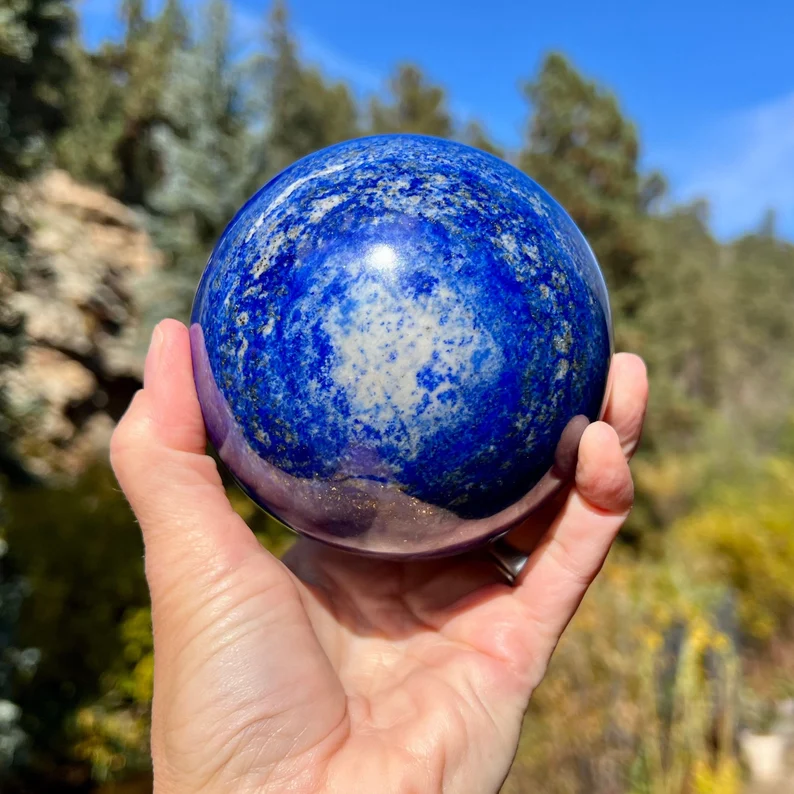
A timeless and ancient stone denoting strength, truth, intellect, courage, royalty, and wisdom, lapis lazuli holds many healing properties. These include physical, mental, emotional, and spiritual aspects with the capacity to ward off evil and negativity.
An elixir of lapis lazuli is said to cure headaches, depression, skin disorders, and anxiety. It can also treat throat, bone marrow, thymus, and immunity disorders while alleviating insomnia, vertigo, and dizziness.
Additionally, it’s said that lapis lazuli can stimulate cell restructuring, which could lead to repairing hearing loss along with preventing and rectifying RNA/DNA damage. This stone can also help with muscular and skeletal disorders.
Lapis Lazuli and the Chakras
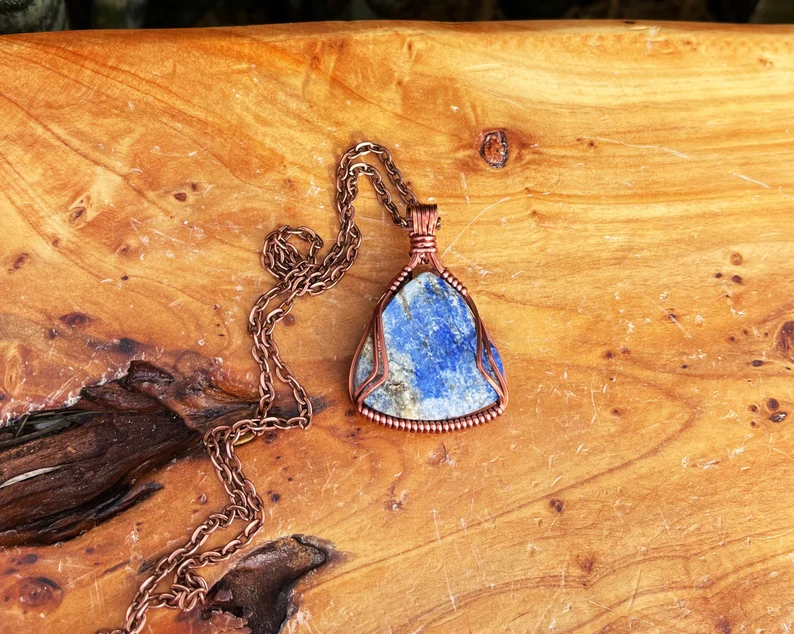
Lapis lazuli synonymously connects to the third eye and throat chakras, influencing hearing and vision while also correcting imbalances of thought. It activates and energizes these areas with respect to purification and unification to maintain the perfection of all the chakras.
This, allows total awareness to surface for complete intellectual capacities to flourish. Psychic abilities and intuitiveness combine with reason and objectivity as a result.
Lapis lazuli is believed to admit a user into ancient mysteries, which allows for the understanding of sacred texts, esoteric ideas, and the wisdom to comprehend the information. This includes planetary and astrological knowledge along with the secret language of plants and animals.
Lapis Lazuli as a Birthstone
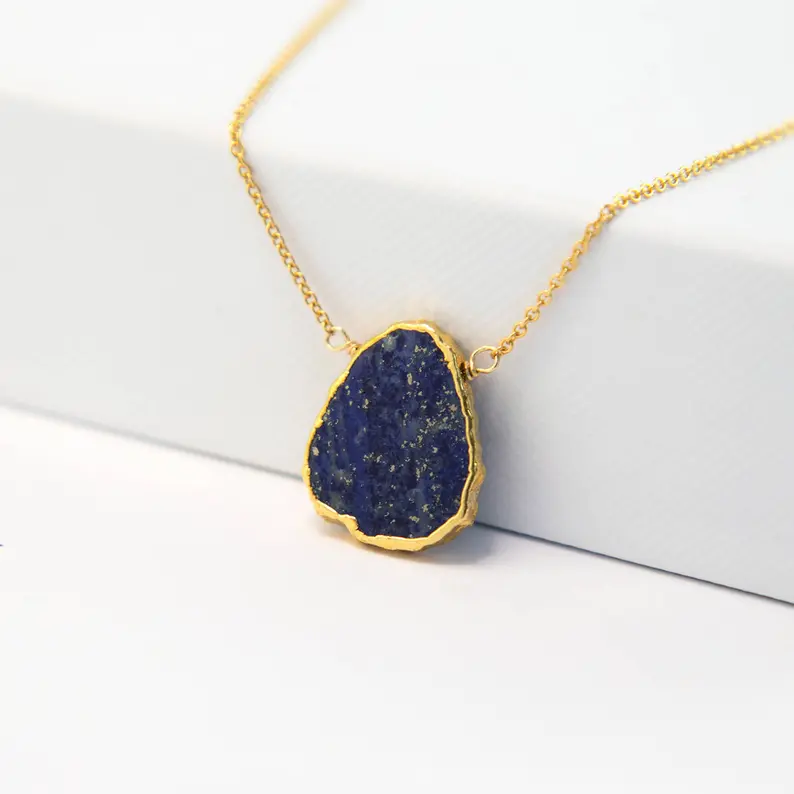
Lapis lazuli is one of the birthstones for the month of September, along with sapphire. It’s often given as a gift to celebrate a September birthday and is said to bring good fortune and blessings to the wearer.
Lapis Lazuli in Astrology
In Astrology, Sagittarius is the ruling zodiac sign for lapis lazuli. It may seem strange due to its solid connection to September birthdays, meaning that it should be connected to Virgo or Libra. However, some claim it belongs to Capricorn or even Aquarius.
How to Use Lapis Lazuli
Lapis lazuli can be used in various ways, bringing you many benefits when used properly. If you’re not interested in jewelry, you can have the stone with you in other forms or display it somewhere in your home or workplace to attract positive energy. Here are some of the ways you can use lapis lazuli:
1. Wear Lapis Lazuli as Jewelry
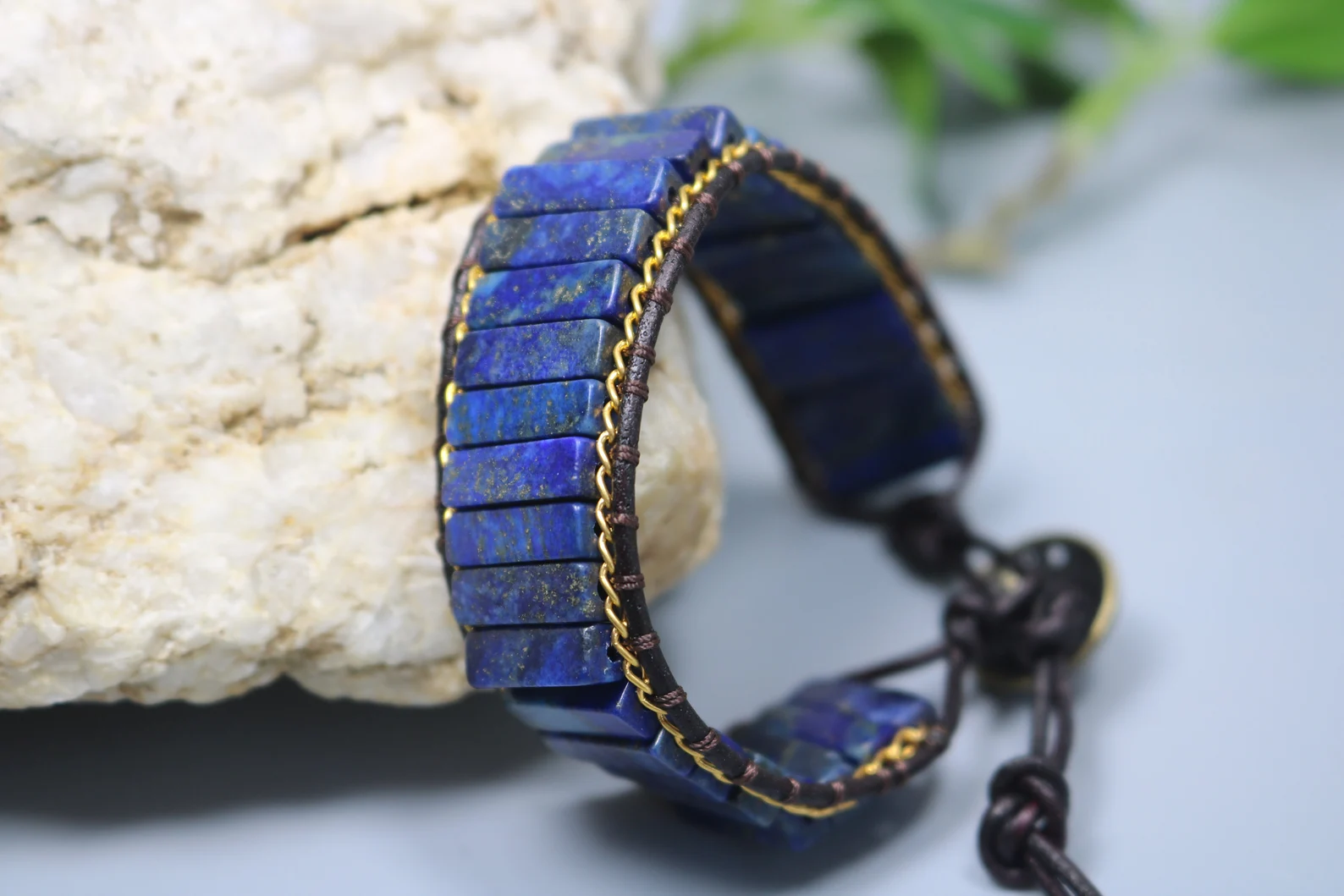
Lapis lazuli is popular for jewelry because of its beautiful, intense blue color. Wearing it as jewelry is a great way of placing the stone close to your skin, as it allows you to get the most out of it.
Direct contact with the stone can help invite healing energy from it and you’ll be able to absorb the positive energy. In addition to its beauty and metaphysical properties, lapis lazuli is also relatively hard and durable, making it a good choice for use in jewelry.
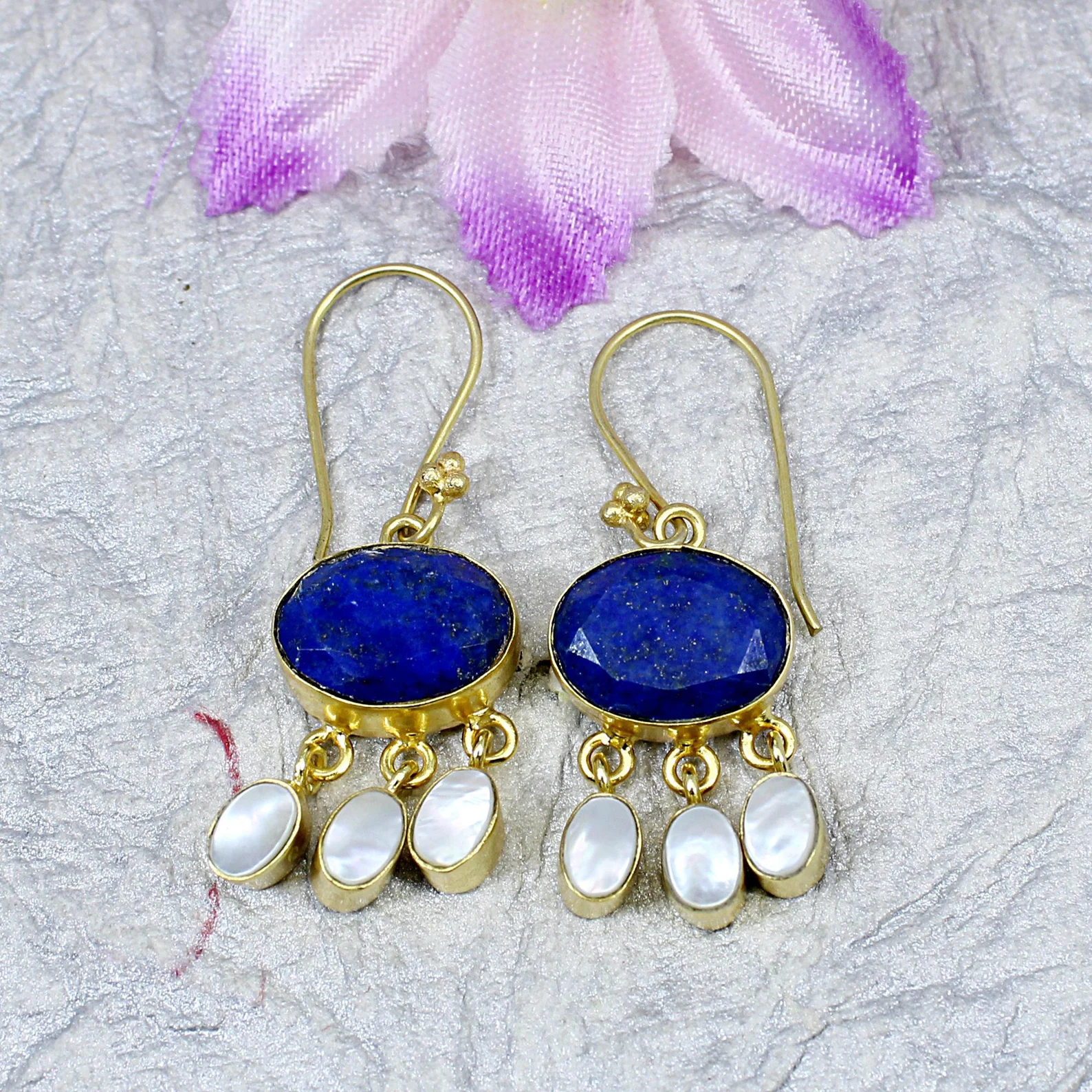
Lapis lazuli is a deep blue gemstone, so it can be paired with other gemstones that have complementary colors.
Some gemstones that would work well with lapis lazuli include diamonds and pearls, and white or yellow gold. If you want to add a pop of color to your lapis lazuli jewelry, you could also pair it with gemstones that have contrasting colors, such as rubies, emeralds, or turquoise.
It’s really a matter of personal preference, and the specific piece of jewelry you are creating. You can experiment with different gemstone combinations to see what looks best for you.
2. Use Lapis Lazuli Ornaments
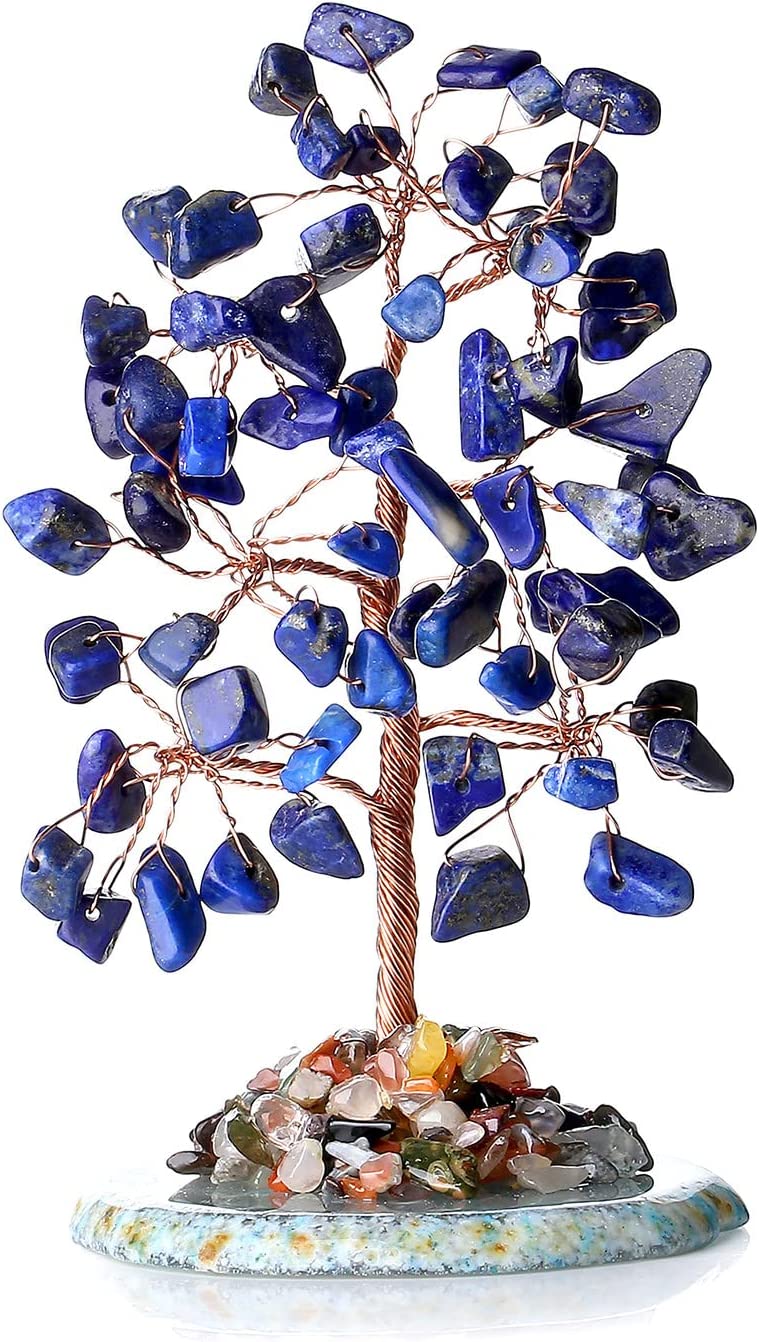
Lapis lazuli is a popular gemstone for use in ornamental items because of its color. It’s often used in decorative objects, like vases and bowls. The stone is also sometimes used in the creation of figurines and other small sculptures.
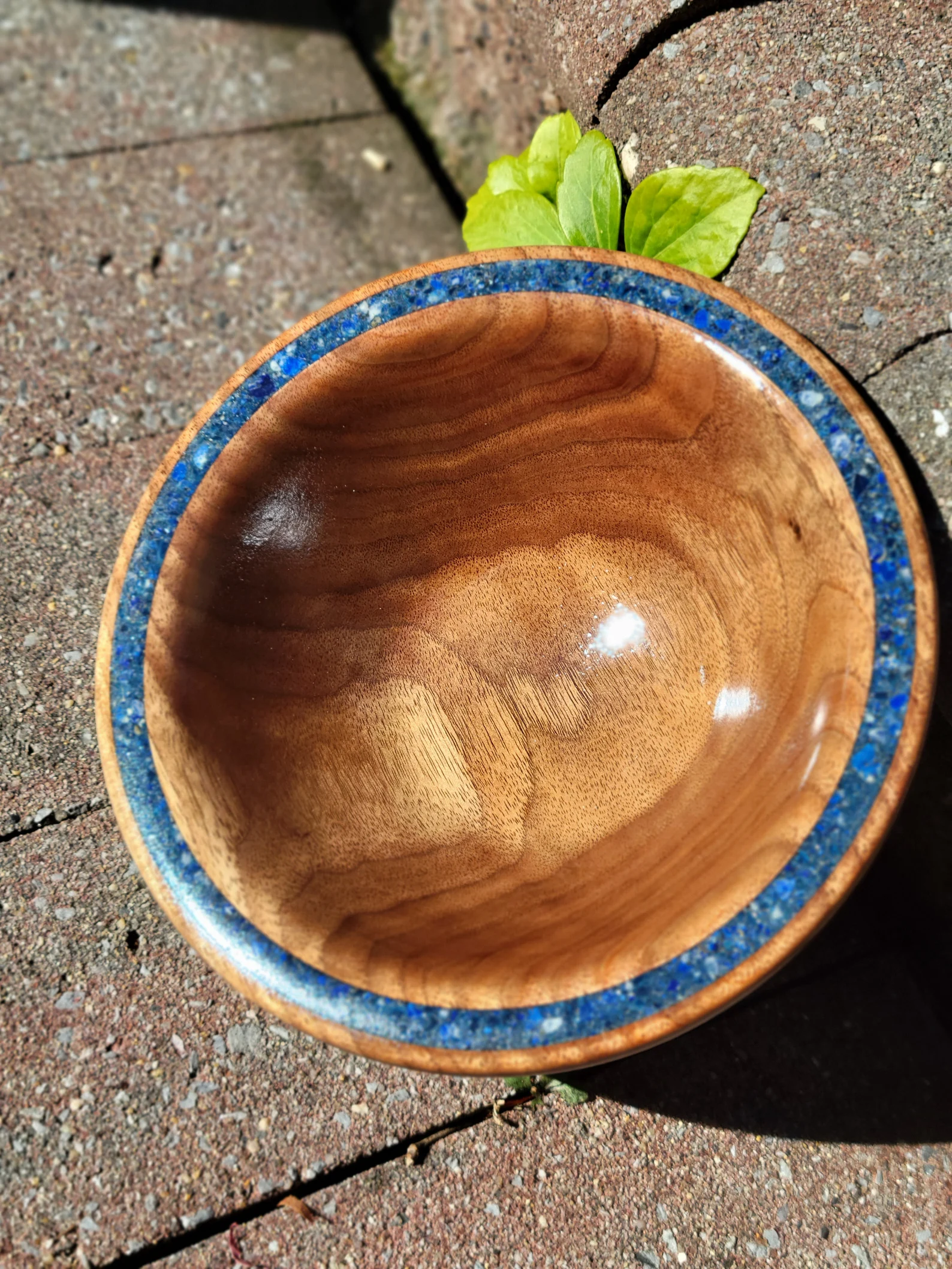
Because of its association with spirituality and healing, lapis lazuli is also commonly used in prayer beads and other religious ornaments. Additionally, the stone can also be seen in the making of inlaid furniture and other decorative household items.
How to Clean Lapis Lazuli
Lapis lazuli is highly sensitive to heat, pressure, abrasives, and household cleaners, so in order to maintain the quality of your stone, you’ll need to follow some guidelines. Here’s how you can clean your stone safely:
To clean lapis lazuli, you can use a soft, dry cloth to gently wipe away any dirt or debris from the surface of the stone. You can also use a soft toothbrush to carefully scrub the surface of the stone to remove any trapped dirt or debris. Avoid using any harsh chemicals or abrasive cleaners, as these can damage the surface of the lapis lazuli.
If your lapis lazuli is particularly dirty or stained, you can also try soaking it in a solution of warm water and mild dish soap for a few minutes, then rinsing it thoroughly with warm water and drying it with a soft cloth.
Remember: never use chemicals, pressure washers, steam cleaners, or ultrasonic machines on a lapis lazuli. These will destroy the stone to an unusable and unrecognizable state.
Avoid exposing lapis lazuli to extreme heat or prolonged exposure, chemicals, and direct sunlight, as this can cause the color of the stone to fade.
Lapis Lazuli FAQs
Due to the recent synthetic and stimulant production of lapis lazuli, not all stones on the market are authentic. They can be plastic, glass, enamel, or blue-dyed gems like jasper or howlite.
If you want to guarantee that what you have is a true lapis lazuli, there are a couple of tests you can try. However, you should have a professional gemologist conduct them in case something happens.
The first is an acid test. You put a drop of hydrochloric acid on the stone. If you smell something akin to a rotten egg, it’s not an authentic lapis lazuli. The second method is to press and then drag the stone against a white surface like porcelain or ceramic. If it leaves behind a light blue streak, you have the real thing.
Rutilated topaz is the ideal gemstone to pair with lapis lazuli as both stones work together to build and shield the aura by way of a blended elixir. Such a mix is conducive to personal fulfillment.
The spiritual meaning of lapis lazuli can vary depending on the context in which it is used and the culture in which it is being interpreted. In general, though, lapis lazuli is often associated with wisdom, truth, and inner power.
Some believe that lapis lazuli has the ability to enhance psychic abilities and intuition and is used in meditation and other spiritual practices to promote inner growth and self-awareness. In some traditions, lapis lazuli is also believed to have protective and medicinal properties and is used in amulets and other talismans to ward off negative energy and promote good health.
Wrapping Up
The high demand for this magical and gorgeous glistening azure gem throughout the ages is a testament to its power. Lapis lazuli enhances happiness, serenity, and joy while allowing access to dreams and mystical realms.
Its powers are so vast and varied, that anyone can benefit from keeping a piece in their lapidary collection. Royalty and common people alike believed in its abilities, were awed by its beauty, and applied it to some of the most beautiful objects still in existence today.




